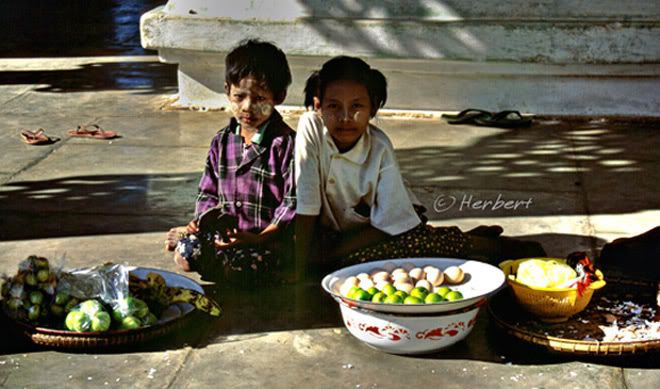
Location: ShweZigon Paya, Bagan, Myanmar (21°22′N 95°28′E)
Date: 16 December 2000; 2.15pm:
Canon EOS 500N (analogue) on slides and scanned
Bagan is an ancient capital of several Myanmar Kings and has an estimated 2,200 temple ruins that cover an area of about 42 square kilometres on the banks of Ayerwaddy River in central Myanmar. These temples were built between the 11th and 12th century. Many of the temples and stupas had been restored by the military junta abut they were done haphazardly ignoring original architectural styles and using modern materials. Furthermore the junta also built a golf course and a paved highway nearby. As a result despite its size and importance, it was not in UNESCO's Heritage site list as the temples were built in an un-historic manner.
Many of these temples are now being used again and often visited by pilgrims. One of the most important temples is the ShweZigon Paya as it serves a prototype for many stupas built across the country. As is common in most many temples, within the compounds of ShweZigon Paya, one can often see monks collecting alms as well as commoners selling food to visitors.


















No comments:
Post a Comment